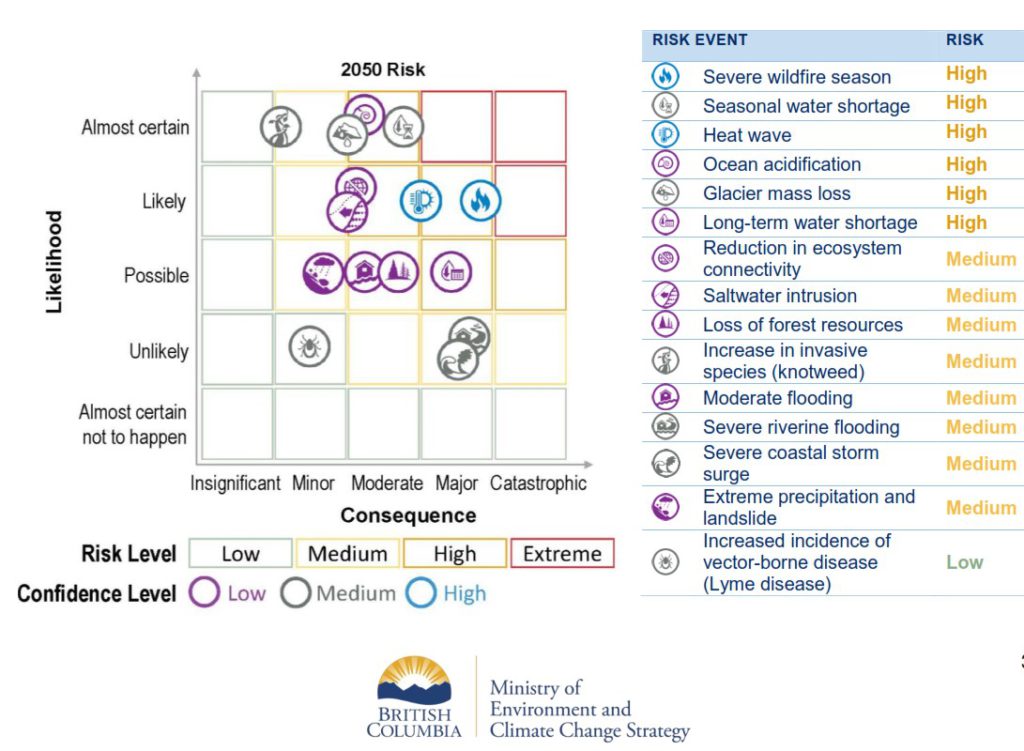The recent heatwave experienced across the Pacific Northwest saw temperatures reaching 40 C in Vancouver, and even higher in the interior region. Based on climate modelling, the temperatures we recently experienced will become the norm by 2070. While this date may seem like a long way off, the reality is the buildings built today will still be in operation in 2070. As we come to experience more and more extreme weather events, we need to adapt our buildings to be resilient.
Many of the cooling systems in our facilities were designed and installed based on historical design conditions and struggle to maintain space comfort during these extreme events. Some buildings in Coastal BC regions, such as elementary schools and residences, are not equipped with cooling systems altogether. The cooling needs of our facilities is expected to increase to six times that of what it is today by 2070. Assessing buildings for resiliency to future climate conditions will ensure occupancy safety and service continuity.
Climate Risks to BC
The increase in wildfires in recent summers also means indoor air quality becomes a critical part of health and safety in our buildings. Reducing outdoor air volumes to decrease smoke particulate intake contradicts best practices for COVID-19 where we should be ventilating as much as possible. Improving air filtration therefore becomes a solution for adapting to increased wildfires as well as mitigating the transmission of communicable diseases.
This graphic below provides an overview of the risk assessment findings for 15 scenarios of climate risks to BC:

Source: Ministry of Environment and Climate Change Strategy (2019). Preliminary Strategic Climate Risk Assessment for British Columbia – Summary of Results
https://www2.gov.bc.ca/assets/gov/environment/climate-change/adaptation/climate-risk-summary.pdf
You will see that heatwaves and seasonal wildfires are very likely to continue and cause major and nearly catastrophic consequences by 2050.
Climate Change Mitigation and Adaptation
Now more than ever, climate change mitigation and climate adaptation both play a synonymous role in reducing the impact of climate change, as well as getting our facilities ready to adapt to increased extremes.
Climate Change Mitigation is the process of reducing the impact we have on the changing climate, particularly through the reduction of greenhouse gas emissions.
Climate Adaptation is the process of preparing ourselves for the known and anticipated impacts of climate change.
Adaptation Strategy
The BC government is preparing to address resiliency for public sector infrastructure and Prism is supporting this initiative as part of a group of consultants to the Climate Action Secretariate as well as direct services to our public sector clients.
Below are suggestions from CleanBC’s Climate Preparedness and Adaptation Strategy for 2021-2022:

Source: CleanBC (2021). Climate Preparedness and Adaptation Strategy: Draft Strategy and Phase 1 Actions for 2021-2022. https://www2.gov.bc.ca/assets/gov/environment/climate-change/adaptation/cpas_2021.pdf
Prism is ready to help you navigate the myriad of options related to low carbon resiliency and climate adaptation, helping to keep your facilities safe and comfortable into the future for your tenants, staff, and communities.
Learn more about our climate change adaptation services here or contact us directly at info@prismengineering.com